M19 mortar from Agger
In May 2000, a rare German strongpoint weapon was uncovered in a bunker in Agger. It was the 5 cm M19 machine mortar that is on display to the left.
Twenty mortars of this type were set up in Denmark. Only three of these have been preserved, and this is the most intact of them. It is not known exactly how many mortars were built, but the total number could hardly have been much more than 100. The production number of the mortar at MuseumsCenter Hanstholm is 135.
It took more than a day to recover the mortar, and the work was carried out by the Society for the History of the German Occupation for Thy and Hanherred, with the assistance of the North Jutland Civil Defence Centre.
The extensive work required to restore and set up the mortar here at the museum was carried out by members of the Society for the History of the German Occupation for Thy and Hanherred.
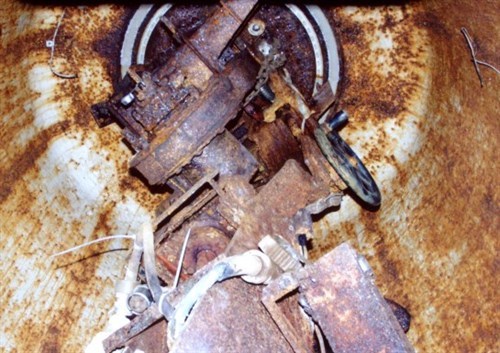
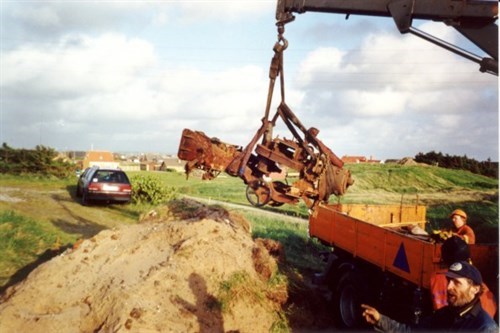
The mortar as it appeared in its dome in Agger. Although most parts of the mortar have been preserved, it needed a thorough restoration after 55 years of neglect. The mortar is lifted onto a lorry, and the conservation work can begin.
M19 automatic mortar
The M19 mortar is an automatic 5 cm mortar developed in 1934 for the purpose of defending permanent military bases.
This mortar could fire up to 120 rounds per minute, and had a maximum range of 750 metres. It is a very heavy and complicated weapon system, with its barrel and base alone weighing 220 kg.
The idea was that the M19 mortar would be used in conjunction with machine guns, especially those mounted in armoured domes. The mortar was to fire into areas that were out of range for the machine guns, such as low spots in the terrain and the far sides of hills. The effect was to chase hiding soldiers out into the open, so that the machine guns could hit them.
The soldier in the turret was in direct telephone contact with the machine gun bunkers, and firing was generally directed from these bunkers. There was also a periscope in the turret, which allowed the soldier to aim his weapon directly. Because of the low height of the turret and the periscope, however, visibility was far from perfect.
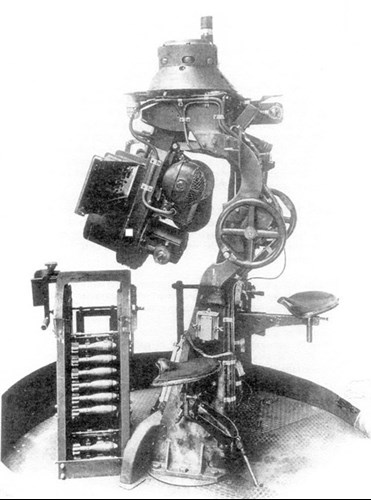
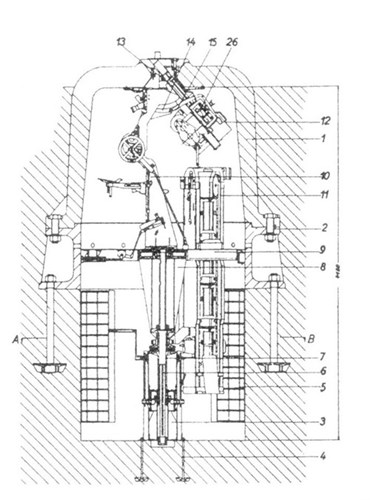
The dome that covered the museum's mortar. The mortar was procted by a 25-cm-thick armoured dome weighing. The top of this dome was almost at ground level, making the mortar very difficult to detect and destroy. Floor plan of a Regelbau 633 bunker.
The bunker
The M19 mortar from Agger was installed in a Regelbau 633 bunker. It was poured in mid-June 1943 and ready for use in December of that same year. There are two bunkers of this type in Agger.
This type of bunker was developed for use in the ?Atlantic Wall?, and 73 of them were built to form a part of this fortification. Twenty of these are in Denmark at the most strategic strongpoints along the west coast of Jutland.
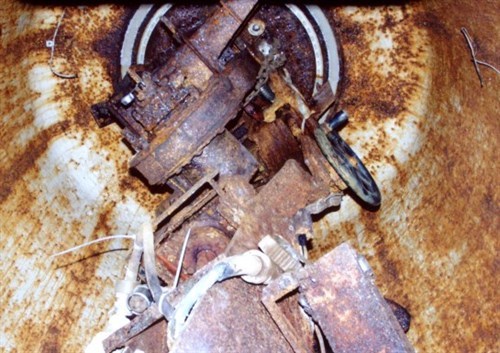
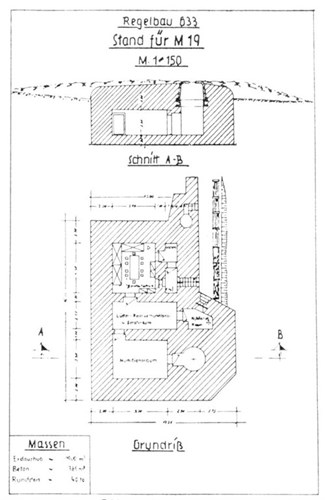
The dome that covered the museum?s machine mortar. The mortar was protected by a 25-cm-thick armoured dome weighing 39 tonnes. The top of this dome was almost at ground level, making the mortar very difficult to detect and destroy. Floor plan of a Regelbau 633 bunker.

